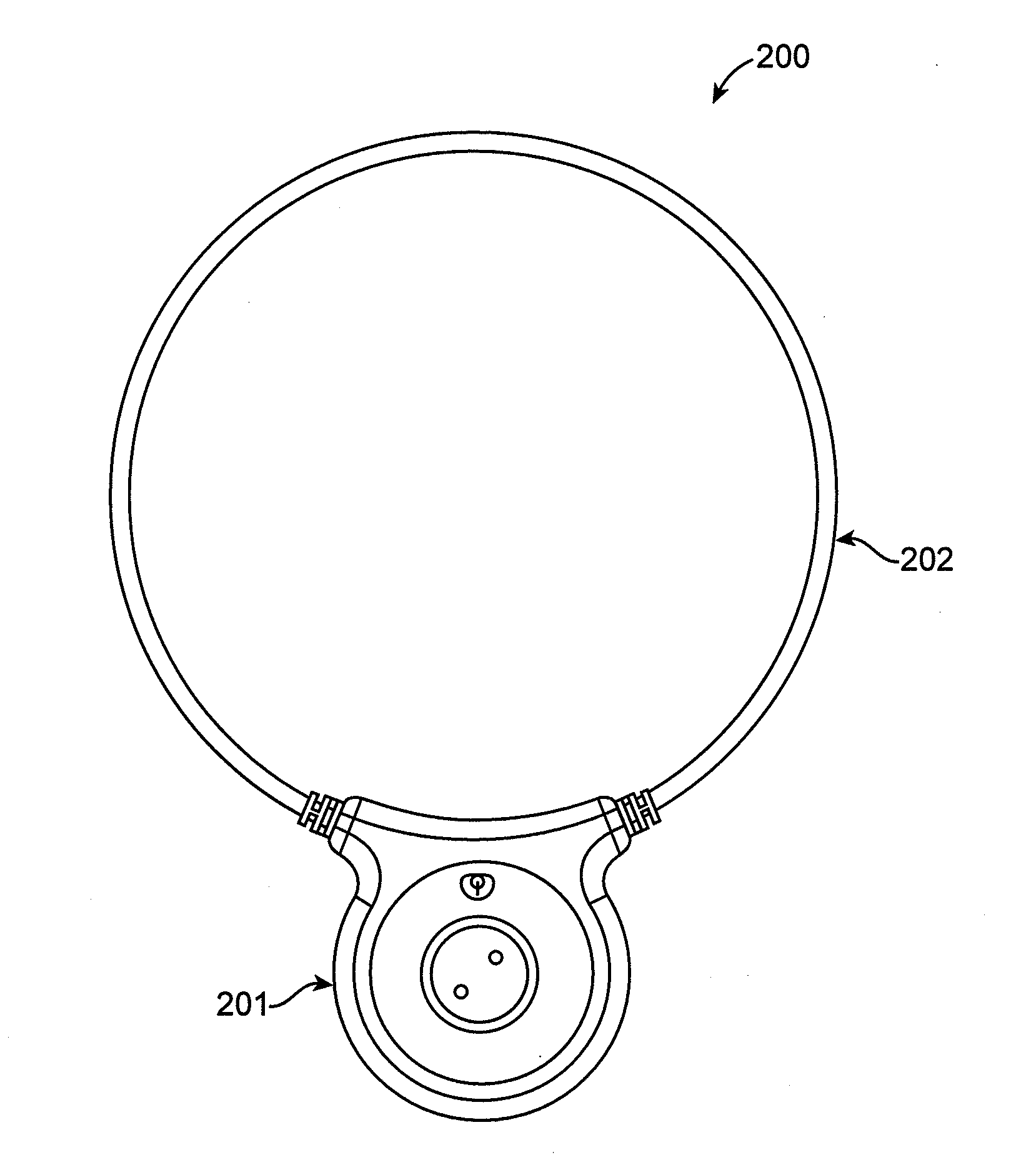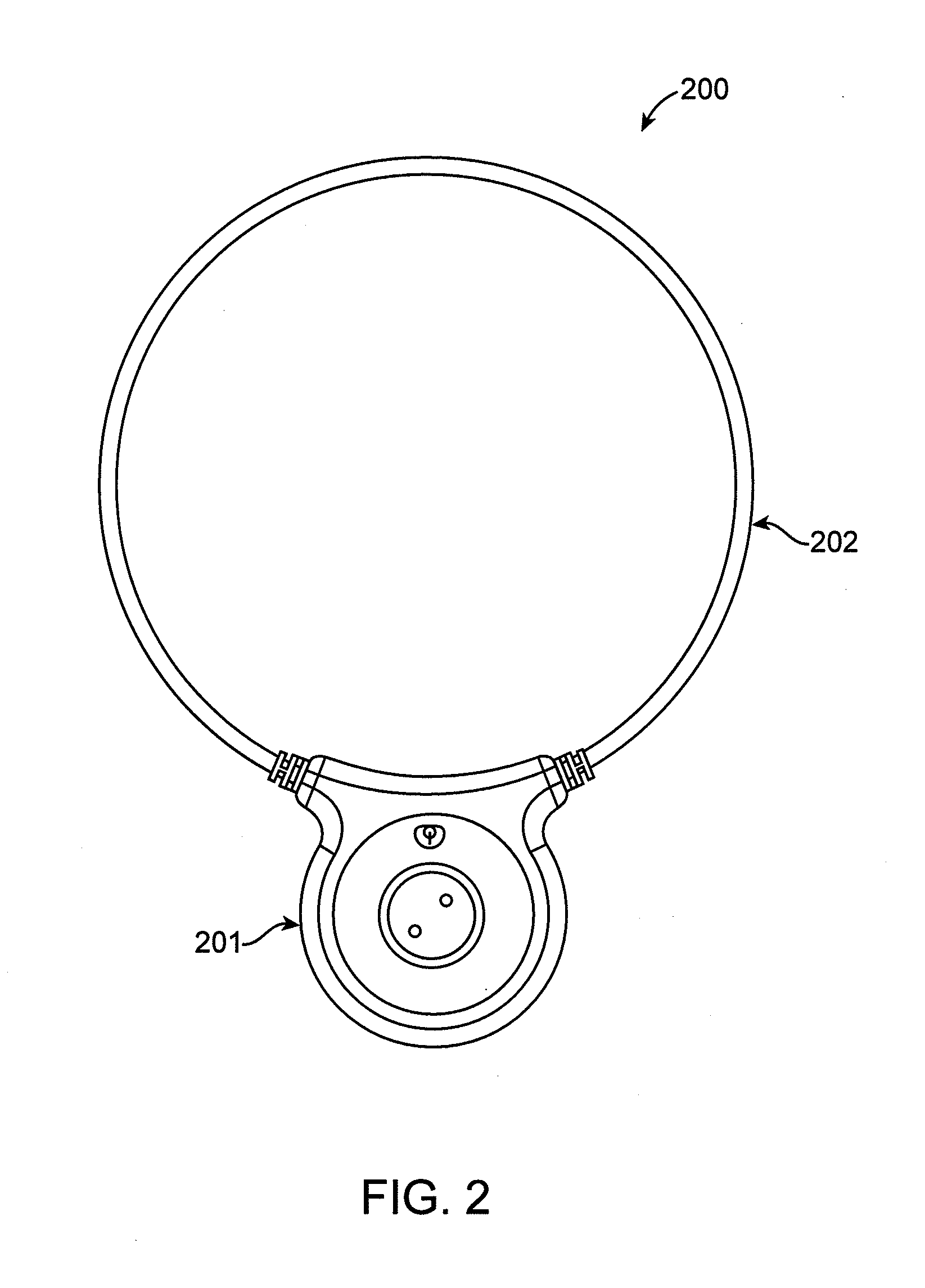Method and apparatus for electromagnetic treatment of cognition and neurological injury
a cognition and neurological injury technology, applied in the field of electromagnetic treatment devices, systems and methods, can solve the problems of inability to use electromagnetic devices with patients who are bedridden, metal-containing devices, toll of neurological deficits and mortality, etc., to accelerate or decelerate the production, enhance the cam-dependent no/cgmp signaling pathway, and increase the binding of ca2+
- Summary
- Abstract
- Description
- Claims
- Application Information
AI Technical Summary
Benefits of technology
Problems solved by technology
Method used
Image
Examples
example 1
[0226]In this example experiments, designed to assess the EMF effect on NO release, were performed on a dopaminergic cell line (MN9D) in culture. Cells were plated at 100,000 cells / 35 mm dish in Dulbecco's Modified Eagle's medium (DMEM) containing 10% fetal calf serum and allowed to stabilize for 24 hours. Thereafter, serum was withdrawn and cells allowed to stabilize for 6 hours at 37° C. These cultures were placed at room temperature for 15 min to create a repeatable stress which caused cytosolic Ca2+ to rise, thereby activating CaM. Cells were then treated for 15 min with a non-thermal RF signal configured according to the teachings of this application, which consisted of a 27.12 MHz carrier pulse-modulated with a burst duration of 3 msec at 2 bursts / sec. In situ signal amplitude was 0.05 G which induced a mean electric field of approximately 18 V / m. The results in FIG. 17 show the EMF signal increased NO production by several-fold, and that this was inhibited by N-(6-Aminohexyl)...
example 2
[0227]In this example experiments, designed to assess the EMF effect on cAMP release, were performed on a dopaminergic cell line (MN9D) in culture. Cells were plated at 100,000 cells / 35 mm dish in Dulbecco's Modified Eagle's medium (DMEM) containing 10% fetal calf serum and allowed to stabilize for 24 hours. Thereafter, for the cAMP signaling experiments, serum was withdrawn and cells allowed to stabilize for 6 hours at 37° C. Cells were then treated for 15 min with a non-thermal RF signal configured according to the teachings of this application, which consisted of a 27.12 MHz carrier pulse-modulated with a burst duration of 3 msec at 2 bursts / sec. In situ signal amplitude was 0.05 G which induced a mean electric field of approximately 18 V / m. The results in FIG. 18 show the EMF signal increased cAMP production approximately 2-fold, and that this was inhibited by L-nitrosoarginine methyl ester (L-NAME), a cNOS inhibitor. These results demonstrate that an EMF signal configured accor...
example 3
[0228]In this example experiments, designed to assess the EMF effect on neurite outgrowth (differentiation), were performed on a dopaminergic cell line (MN9D) in culture. Cells were plated with or without fetal calf serum and 1 mM dibutyryl cyclic adenosine monophosphate (Bt2cAMP). At 1 day, immature cultures were divided into two groups and treated with a non-thermal RF signal configured according to the teachings of this application, which consisted of a 27.12 MHz carrier pulse-modulated with a burst duration of 3 msec at 2 bursts / sec. In situ signal amplitude was 0.05 G which induced a mean electric field of approximately 18 V / m. EMF treatment was 30 minutes a day for three days. Cultures assigned to control groups were exposed to the same conditions in the absence of EMF signals. After three days of treatment, cells were fixed and photographed for subsequent analysis with ImageJ. Measurements of neurite length, cell numbers, and number of cells with and without processes were qu...
PUM
 Login to View More
Login to View More Abstract
Description
Claims
Application Information
 Login to View More
Login to View More - R&D
- Intellectual Property
- Life Sciences
- Materials
- Tech Scout
- Unparalleled Data Quality
- Higher Quality Content
- 60% Fewer Hallucinations
Browse by: Latest US Patents, China's latest patents, Technical Efficacy Thesaurus, Application Domain, Technology Topic, Popular Technical Reports.
© 2025 PatSnap. All rights reserved.Legal|Privacy policy|Modern Slavery Act Transparency Statement|Sitemap|About US| Contact US: help@patsnap.com



